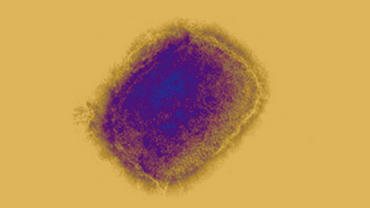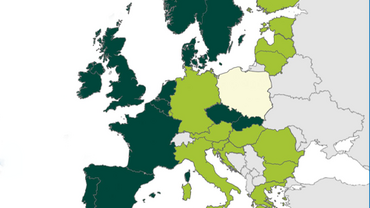Epidemiological update: Monkeypox outbreak
As of 16 May 2022, there is a multi-country outbreak of monkeypox affecting the UK, EU/EEA states, and North America. As of 20 May 2022, there have been a total of 38 confirmed cases reported worldwide, 37 of which have no history of travel to endemic countries.
On 14 May 2022, a familial cluster of two cases of monkeypox was reported in the United Kingdom (UK) by the UK Health Security Agency (UKHSA). These cases have no relation to a travel-related case from Nigeria that was previously reported on 7 May 2022 in the UK. Since the UKHSA reporting of cases, several other European countries have reported cases of monkeypox.
As of 19 May 2022, 38 cases have been confirmed worldwide. Of these, 26 cases have been confirmed in the following EU/EEA countries: Belgium (2), France (1), Italy (1), Portugal (14), Spain (7), and Sweden (1). In the UK, nine cases have been confirmed. In North America, three cases have been confirmed in Canada (2), and the US (1). The majority of cases have been in young men, many self-identifying as men who have sex with men (MSM), and none with recent travel history to areas where the disease is endemic. No deaths have been reported so far, and only two cases have been admitted to hospital for reasons other than isolation.
Epidemiological update
Since the disease was first detected on 7 May 2022 in the United Kingdom, a total of nine cases have been confirmed in the United Kingdom. Eight of the nine cases have no travel history and have no relation to the travel related case confirmed on 7 May.
Since the UKHSA reporting of cases, in the EU/EEA, a further 26 cases have been confirmed since 18 May in Belgium (2), France (1), Italy (1), Portugal (14), Spain (7), and Sweden (1). Portugal has reported another 20 suspected cases, and Spain has reported another 23 suspected cases which are awaiting laboratory confirmation.
In total, since 14 May, there have been 37 confirmed, non-travel related cases of monkeypox worldwide, with 26 in EU/EEA countries. The majority of cases are in young men, self-identifying as MSM. There have been no deaths, and two hospitalisations for reasons other than isolation were reported worldwide. Health authorities across counties have stated that further cases are expected. Below is a breakdown of the reporting countries:
- two cases have been confirmed in Belgium
- one case has been confirmed in France
- one case has been confirmed in Italy, with 2 suspected cases identified
- 14 cases have been confirmed in Portugal, with an additional 20 suspected cases identified all in the Lisbon & Tagus River region
- seven cases have been confirmed in Spain, with 23 suspect cases identified
- one case has been confirmed in Sweden
- nine cases have been confirmed in the United Kingdom
- two cases have been confirmed in Canada, with an additional 17 suspected cases identified
- one confirmed and one probable case in the US
- one confirmed case in Australia
The majority of cases have been in young men, many self-identifying as men who have sex with men (MSM), and none with recent travel history to areas where the disease is endemic. Most cases presented with lesions on the genitalia or peri-genital area, indicating that transmission likely occurs during close physical contact during sexual activities. This is the first time that chains of transmission are reported in Europe without known epidemiological links to West or Central Africa, where this disease is endemic. These are also the first cases worldwide reported among MSM.
Disease background and transmission
This is the first time that chains of transmission are reported in Europe without known epidemiological links to West or Central Africa. These are also the first cases worldwide reported among MSM. The monkeypox virus is considered to have moderate transmissibility among humans and can be transmitted through droplets and/or contact with infected lesions. Transmission between sexual partners, due to intimate contact during sex with infectious skin lesions seems the likely mode of transmission among MSM.
Given the unusually high frequency of human-to-human transmission observed in this event, and the probable community transmission without history of traveling to endemic areas, the likelihood of further spread of the virus through close contact, for example during sexual activities, is considered to be high. The likelihood of transmission between individuals without close contact is considered to be low.
The clinical manifestation of monkeypox is usually mild. The West African clade, which has so far been detected in the cases reported in Europe, has been observed to have a case fatality rate of about 3.3% in Nigeria. Mortality is higher among children and young adults, and immunocompromised individuals are especially at risk of severe disease. Most people recover within weeks.
Immediate recommendations
Public health institutions/authorities and community-based organisations should take steps to raise awareness on the potential spread of monkeypox in the community, especially among men who have sex with other men that engage in casual sex, or who have multiple sexual partners. Individuals engaging in casual sex or who have multiple sexual partners who are not MSM should also be vigilant. Any persons presenting with symptoms indicative of monkeypox should seek specialist care and should abstain from sexual activities or any other type of activities involving close contact until monkeypox is either excluded or the infection is resolved.
Suspected cases should be isolated and tested and notified promptly. Back-wards and forwards contact tracing should be initiated for positive cases, and exposed mammalian pets should be quarantined. If smallpox vaccines are available in the country, vaccination of high-risk close contacts should be considered after a risk-benefit assessment. For severe cases, treatment with a registered antiviral can be considered, if available in the country.
ECDC actions
ECDC will continue to monitor this event through epidemic intelligence activities and report relevant news on an ad-hoc basis. ECDC published a news item on 19 May, with initial recommendations. An epidemiological update will be posted on 20 May. Multi-lateral meetings between affected countries, WHO IHR and ECDC have taken place to share information and coordinate response. A process in EpiPulse has been created to allow countries to share information with one another, WHO, and ECDC. The production of a Rapid Risk Assessment has been launched with prospective publication on Monday 23 May.






